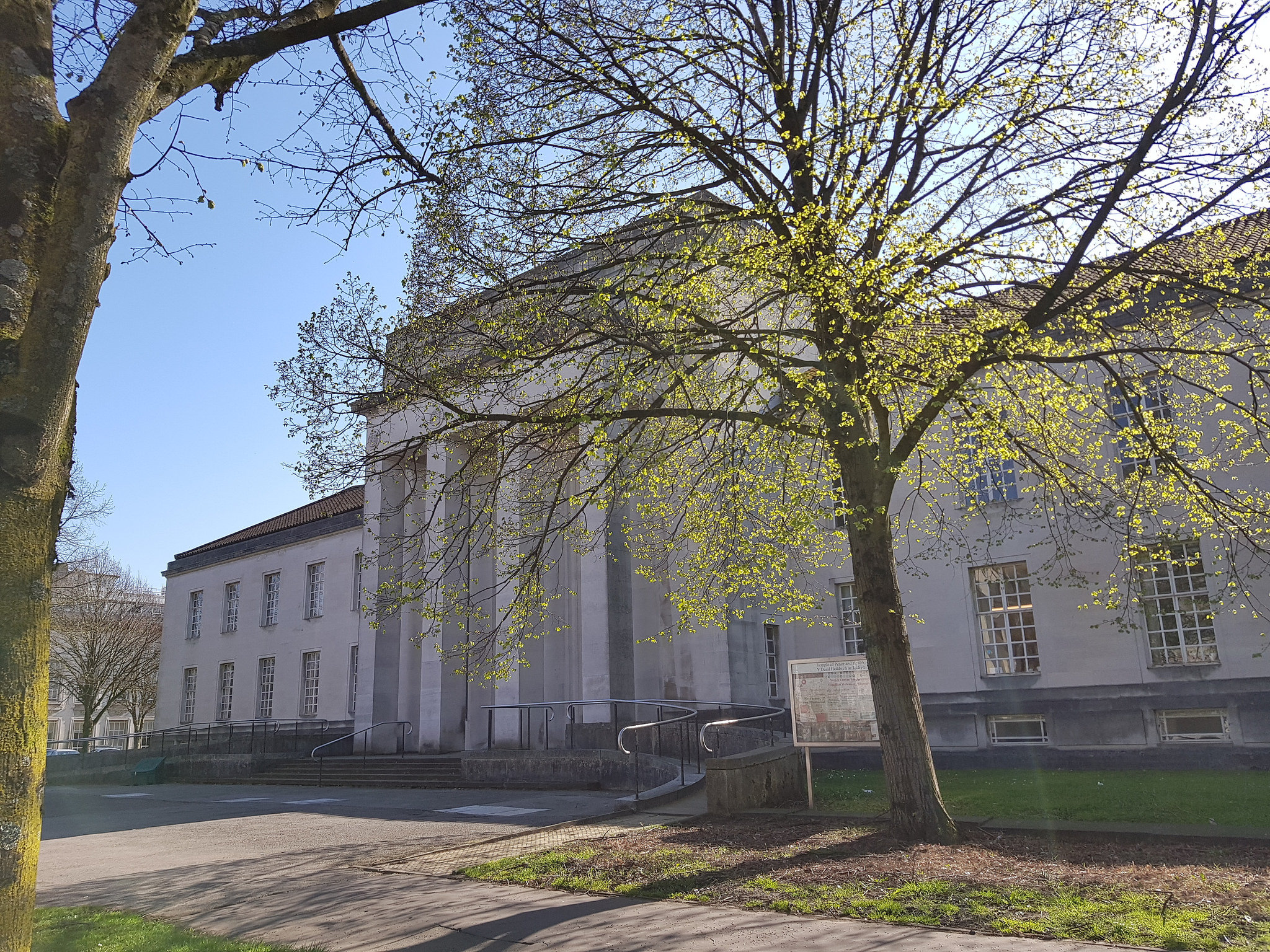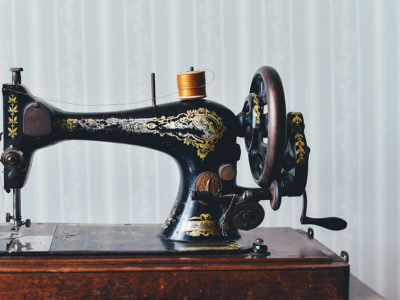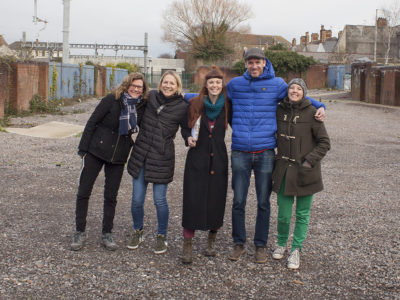View the #Temple80 Event Programme
Visitors to the exhibition can make donations to the Temple 80 Appeal.
Focus On:
The 7 Pathways for Peace
“One of the logos that we’ve used for the exhibition is what we’ve called the peace tree,” says Craig. “The exhibition is themed around the colours of the rainbow, which is a peace flag from the sixties from the anti-nuclear disarmament movement. We’ve adopted those to represent different aims within the peace movement. These are the themes of the exhibition but also the actions we hope people will be inspired to take.”
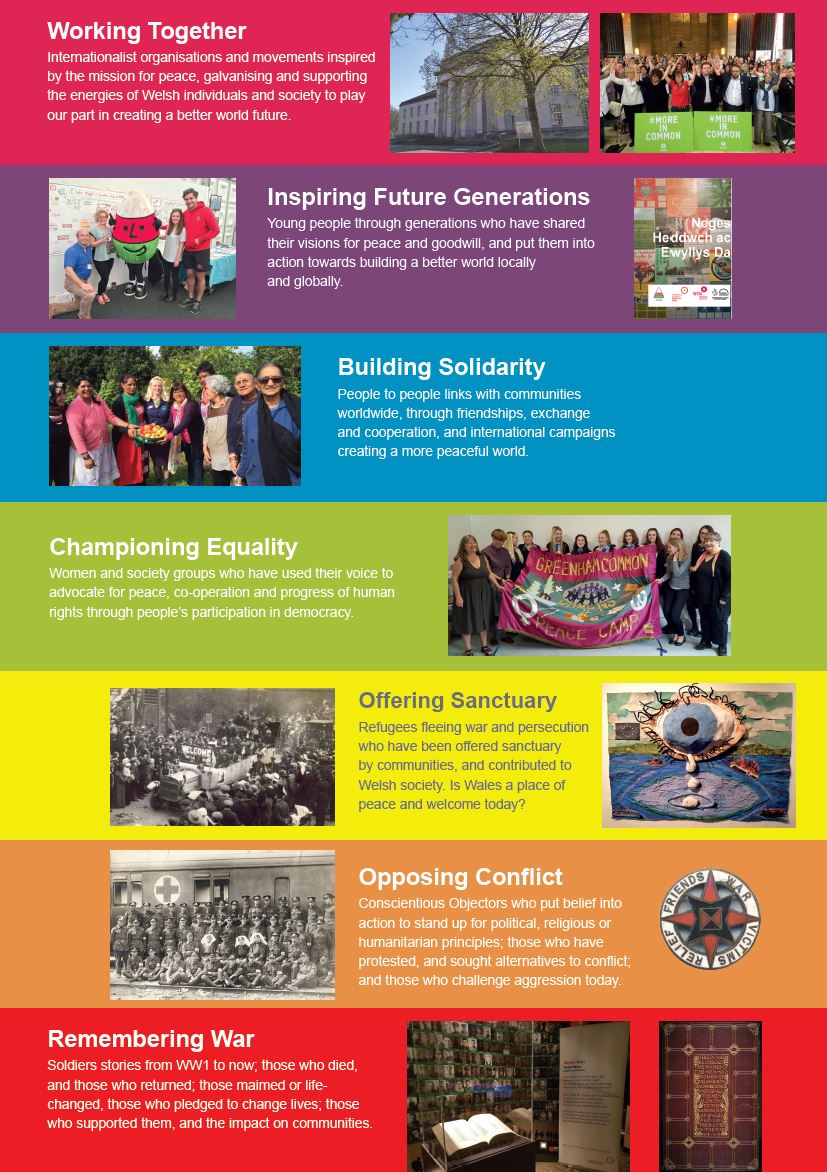
The 7 pathways for peace: image courtesy of Wales for Peace
Minnie James
“On 23rd November 1938 the temple was opened by a woman called Minnie James,” says Craig. “She was an ordinary housewife from Merthyr Tydfil who lost three of her sons in the First World War. I think having an ordinary mother open the building is very symbolic of what the temple has stood for from then until now, which is to inspire the people of Wales.”
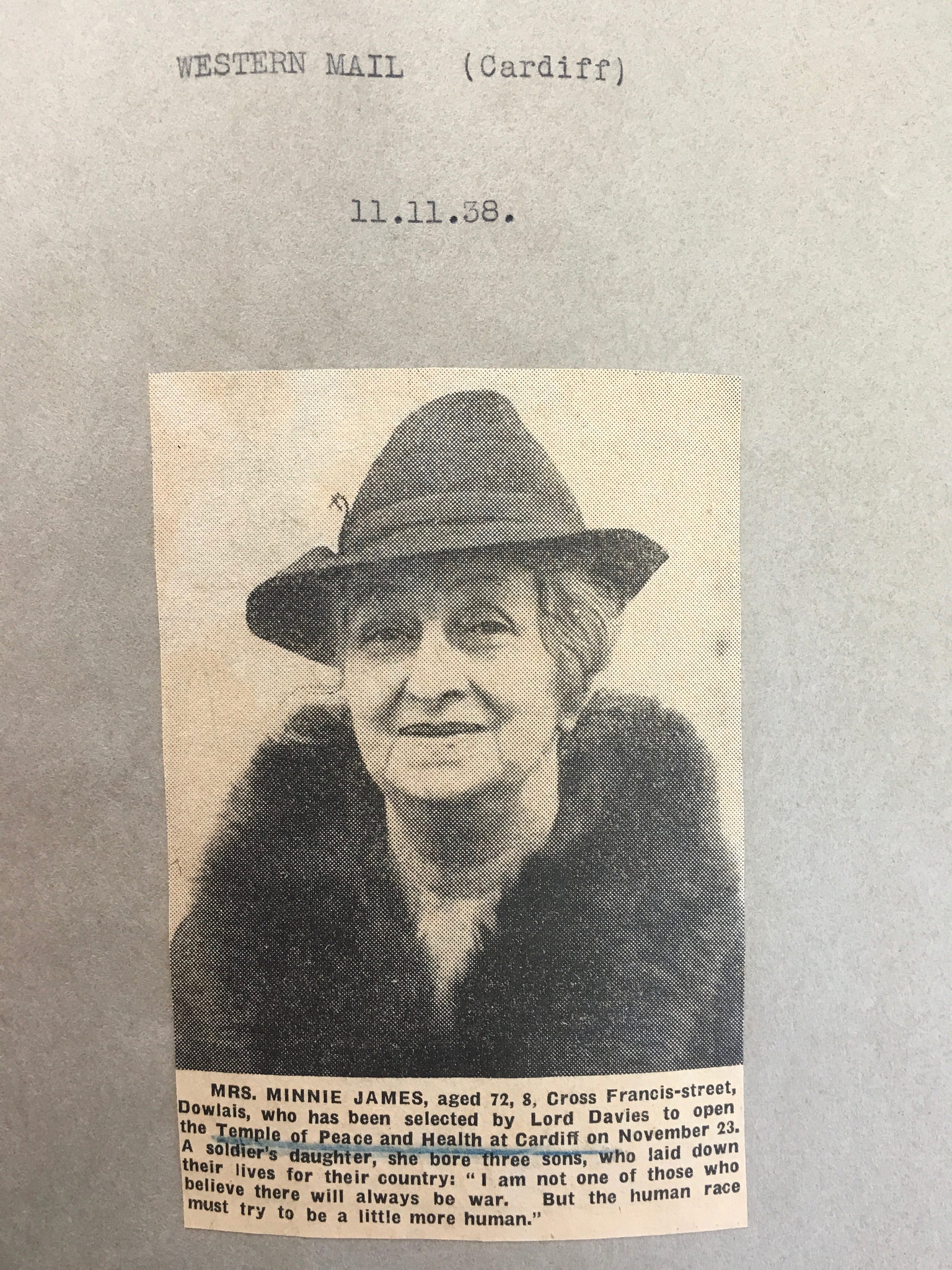
Minnie James: image courtesy of Wales for Peace
Original Archival Materials
“In the twenties, over 300,000 women in Wales – which would have been over a third of the population of women at the time – signed a petition to the women of America,” says Susie. “It was to persuade the President to sign up to the League of Nations. The cover of that petition will be on display.”
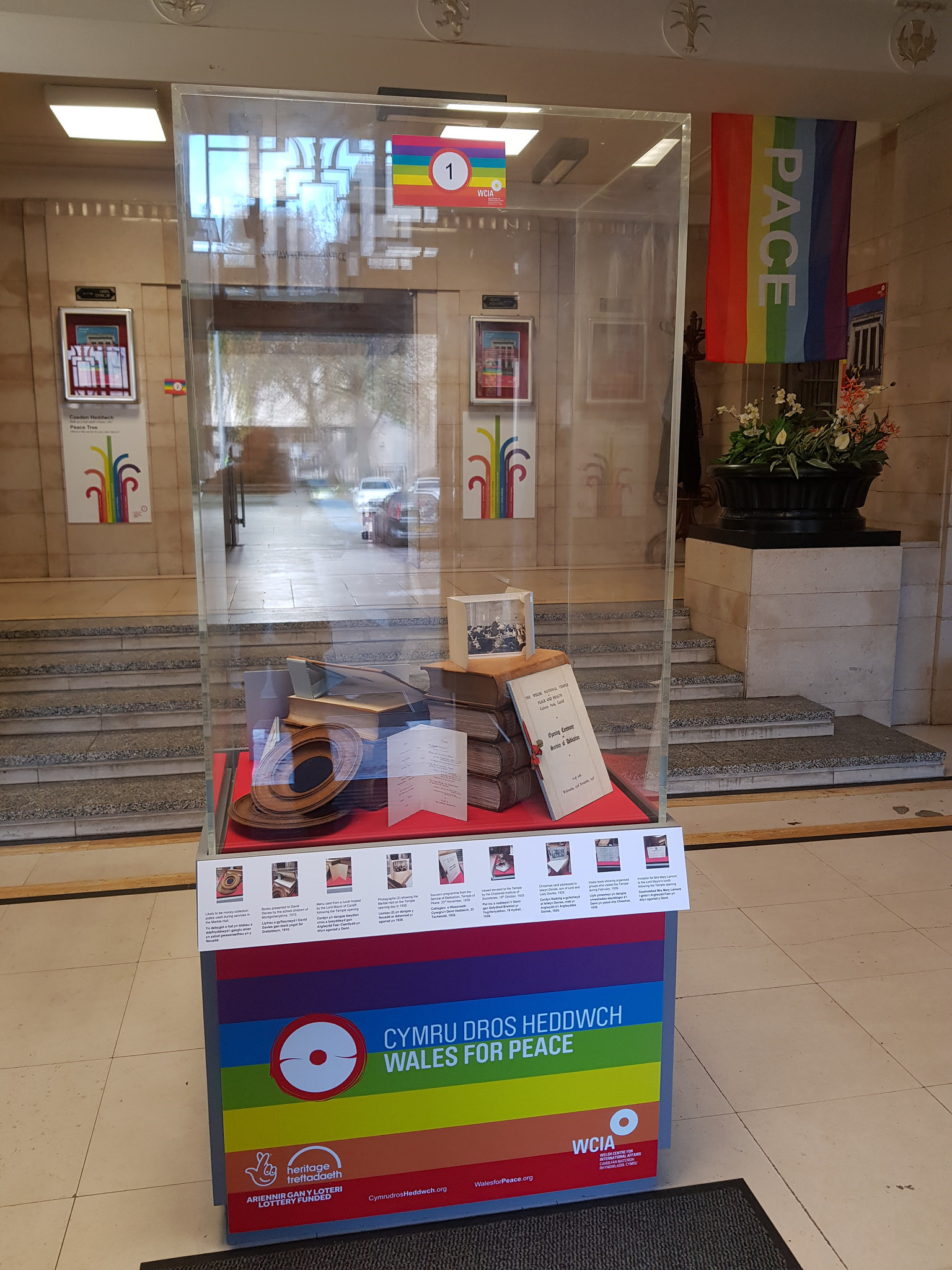
Inside the exhibition: image courtesy of Wales for Peace
The Wales for Peace exhibition allows visitors to explore the impact Welsh communities have made towards campaigning against conflict
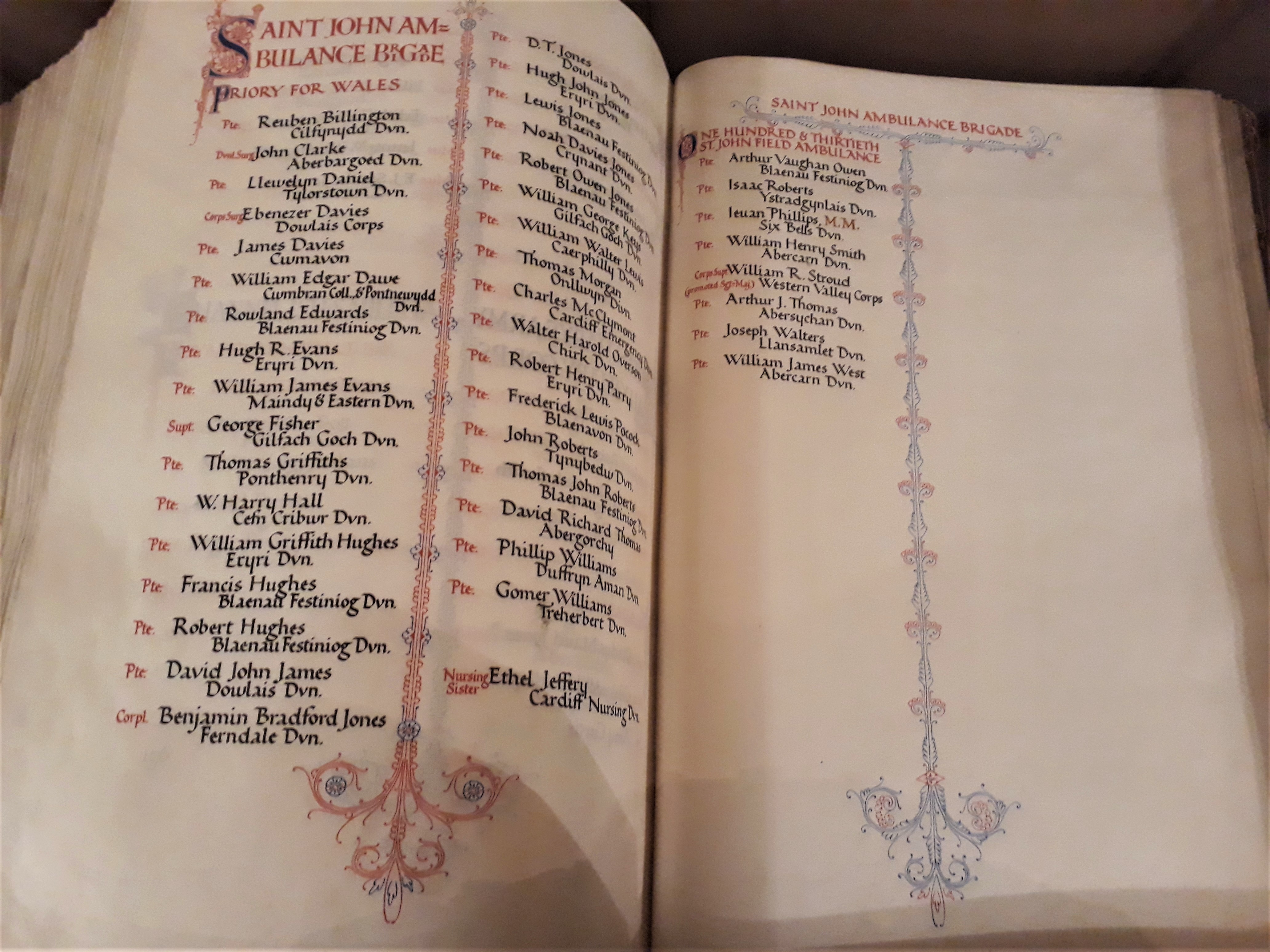
The Book of Remembrance will be displayed in the exhibition
This Remembrance Day marks 100 years since World War One, but closer to home, it’s an important moment to celebrate Welsh contributions to peace.
To coincide with the 80th anniversary of the Temple of Peace and Health, the Wales for Peace exhibition is open throughout November. It is the culmination of a project that has spanned four years, and gathered stories from across Wales.
Craig Owen, Head of Wales for Peace, thinks the emphasis on local activism sets the exhibition apart. “We’re constructing a timeline which will draw out the role of the people of Wales,” he says. “Often these stories are told individually, but they’ve never been illustrated alongside each other.”
The exhibition is organised by the Welsh Centre for International Affairs. Although it explores stories from the past, Chief Executive Susie Ventris-Field believes the aim is to inspire visitors to focus on the future.
“Celebrating people who aren’t always recognised shows that whoever you are, you can make a difference,” she says. “We wanted to give people the opportunity to find out about the temple’s history, but also to think about what comes next.”
Craig and Susie both emphasise the importance of Welsh internationalism. As the first Fair Trade Nation, and aiming now become the first Nation of Sanctuary, Wales is a strong advocate for world peace.
“The context of Brexit has made some divisions become clearer,” Susie says. “The echo chamber nature of social media means that you’re getting trapped in a cycle [of opinion]. Wales has been a place of sanctuary in the past, and can continue to do so. I think that’s one of the messages.”
The Temple of Peace and Health is open 9 – 5 on weekdays to allow visitors to explore the exhibition, alongside a programme of events for all ages to celebrate #Temple80. Visit the website to find out more.
View the #Temple80 Event Programme
Visitors to the exhibition can make donations to the Temple 80 Appeal.
Focus On:
The 7 Pathways for Peace
“One of the logos that we’ve used for the exhibition is what we’ve called the peace tree,” says Craig. “The exhibition is themed around the colours of the rainbow, which is a peace flag from the sixties from the anti-nuclear disarmament movement. We’ve adopted those to represent different aims within the peace movement. These are the themes of the exhibition but also the actions we hope people will be inspired to take.”

The 7 pathways for peace: image courtesy of Wales for Peace
Minnie James
“On 23rd November 1938 the temple was opened by a woman called Minnie James,” says Craig. “She was an ordinary housewife from Merthyr Tydfil who lost three of her sons in the First World War. I think having an ordinary mother open the building is very symbolic of what the temple has stood for from then until now, which is to inspire the people of Wales.”

Minnie James: image courtesy of Wales for Peace
Original Archival Materials
“In the twenties, over 300,000 women in Wales – which would have been over a third of the population of women at the time – signed a petition to the women of America,” says Susie. “It was to persuade the President to sign up to the League of Nations. The cover of that petition will be on display.”

Inside the exhibition: image courtesy of Wales for Peace

